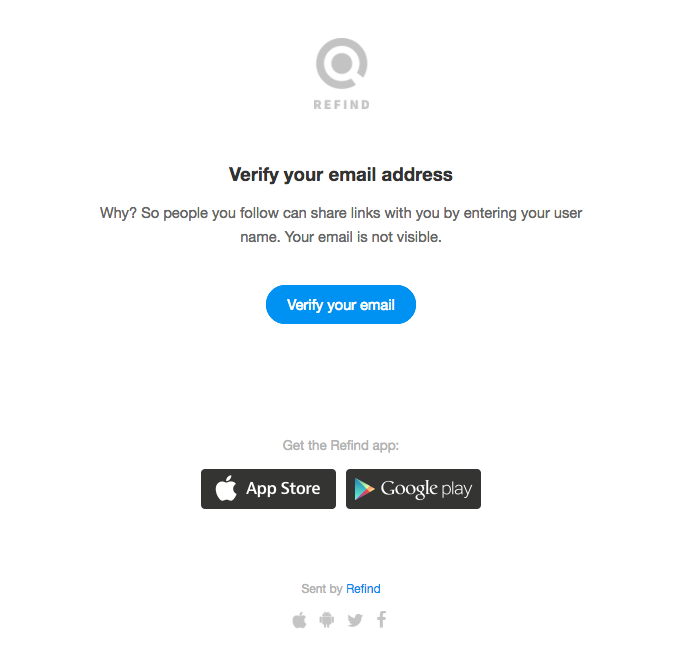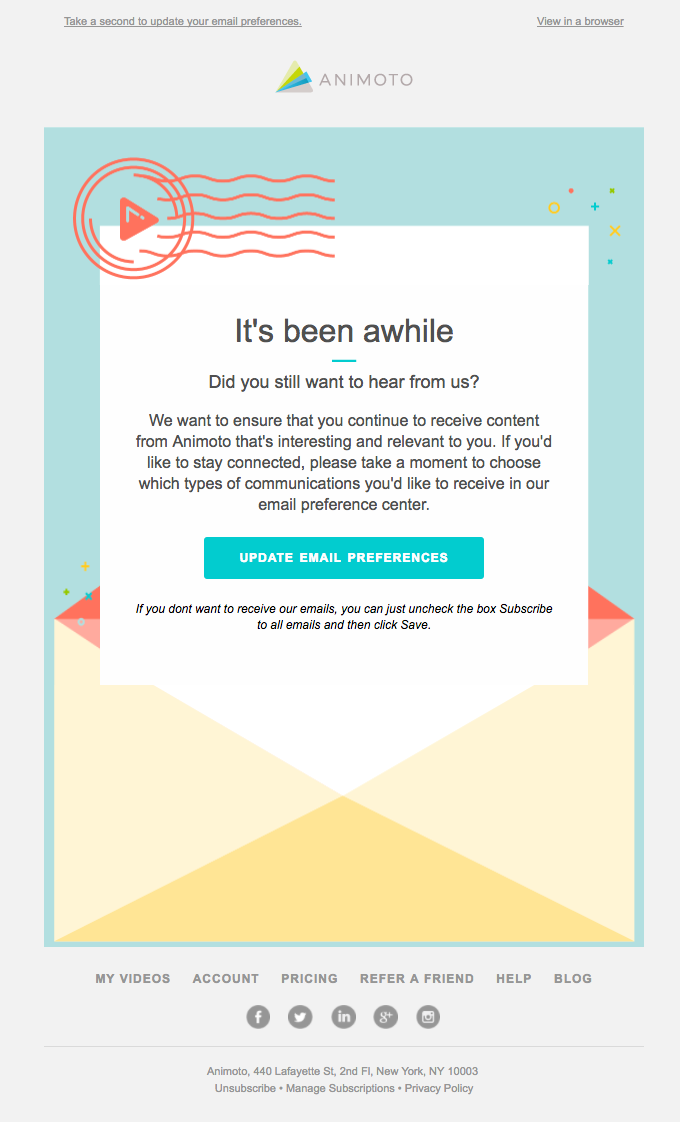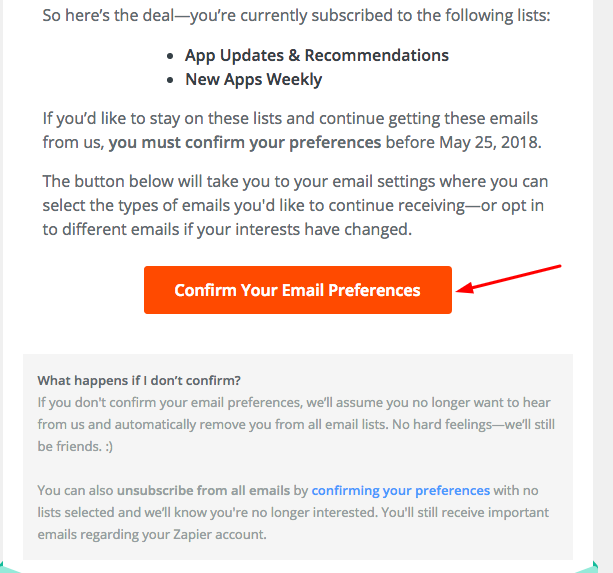Maintaining good email list hygiene guarantees that you:
- Reduce the number of emails that end up in spam folders and ruin your reputation
- Reduce your email bounce rates
- Send highly targeted email campaigns to relevant audiences
In this post, we’ll discuss the importance of a healthy email list and include the top email hygiene best practices to get you started.
What is an email list hygiene?
Email list hygiene is the process of removing inactive or invalid subscribers from your email list. This periodic process improves your email deliverability and increases subscriber engagement rates.
It involves practices such as:
- Removing group emails
- Re-engaging passive subscribers
- Providing clear opt-out options and more.
While this may mean that your contact list will reduce, it also means that you’ll have a quality subscriber list and a lower price for email service. Contrary to what some marketers believe, bigger isn’t always better with email lists.
How do I know if my list needs to be cleaned?
Cleaning your email list should be a regular practice. This is especially crucial for businesses with large lists.
Here are a few indicators that your email list hygiene is in trouble and it’s time to clean up.
- Declining open rates: A sudden decline in your open rates may indicate that you need to clean your list. More so if your email marketing efforts have been consistent and spot on.
Email service providers (Gmail, Hotmail, AOL) tend to flag emails as spam if they get ignored by recipients for too long. If this happens with many users, it may harm your sender’s reputation.
Poor sender’s reputation makes it difficult for interested users to receive your emails in their inbox. Therefore, tracking your metrics, evaluating your open rates, and removing inactive users are essential.
- Increased hard bounces: Another metric that may indicate an email list hygiene issue is an elevated number of hard bounces. Hard bounces are those sent to invalid, or expired email addresses.
These can be damaging to your brand. For instance, having several hard bounces in a row could lead to your domain name getting blacklisted. You’d want to eliminate these as regularly as possible.
- Elevated soft bounces: Unlike hard bounces, soft bounces may not be as damaging but you should look out for them. They’re caused by different reasons, mostly temporary.
These include sending spammy content, temporary email server issues, a full inbox, autoreply status, etc. You may consider removing these emails from your list if you notice that soft bounces keep occurring consistently over time.
- Increased spam complaints: Spam complaints can also indicate an issue with your email list hygiene. The more people report your emails as spam, the more your reputation with email service providers drops.
Usually, more than one spam complaint per 1,000 emails indicates a problem. This could affect your less engaged contacts and new subscribers, as your emails may end up in their spam folders.
- High unsubscribe rates: A surge in your opt-out rates may also raise an issue with your email service providers if it occurs over time. However, it could point to an issue in your email marketing strategy.
For instance, it may mean that your list-building efforts may be targeting the wrong audience. Tracking these metrics will help you identify such gaps and improve them.
How to keep your email list clean and healthy
Now that you know when to check your email list hygiene, here are some best practices to help you clean your list.
1. Define the cadence of cleaning your email list
This first practice involves determining how often you clean your list. Granted, your list of unsubscribed and unengaged contacts will build up from time to time.
So, you’ll need to set intervals to clean your email list every year. The rule of thumb is to clean up every six months.
However, the frequency with which you choose to clean your list may vary depending on the size of your email list.
For instance, with a larger list, you’d need to be more frequent with your email hygiene practices compared to a smaller one.
To find what works for your business, you’ll need to monitor your email performance reports and track your open, unsubscription, and bounce rates.
Here are a few more instances that may mean it’s time to clean your email list:
- When you have acquired many new subscribers. This way, you can weed out illegitimate addresses.
- When you’re transferring data into a new customer relationships management platform.
- When switching between email service providers.
- Before you run a re-engagement email campaign.
2. Remove group/alias accounts
Another email list hygiene best practice is getting rid of group or alias email addresses.
Also known as role emails, group accounts refer to email addresses used by people occupying a certain role. These emails are sent to groups of people and aren’t necessarily attributed to a single user.
For example, email addresses like support@, info@…, help@, and more. You want to get rid of such emails for the following reasons:
- Such contacts have low engagement rates. Since they’re shared with multiple people, no one regularly checks them.
- Email service providers are more likely to block emails sent to group email addresses with a marketing intent. This is because they tend to have high opt-out rates and spam complaints.
Also, as they’re not attributed to a single user, it’s difficult to prove that a specific person consented to receive emails through these addresses.
- They’re more likely to be sent to spam. For instance, if a different support agent takes up the role of monitoring that email, they may send your emails to spam since they did not opt into your list in the first place.
Similarly, if you use a role-based email to send campaigns, you may need to change it as it’s more likely to be blacklisted.
3. Consider removing bounced and invalid emails
Hard and soft bounces are partial indicators of a problem with your email list hygiene. This makes it critical to remove bounced and invalid emails.
However, hard bounces and soft bounces don’t have the same effect on your email list health and should be treated differently.
As mentioned earlier, sending email campaigns to invalid or non-existent email addresses leads to hard bounces. If your hard bounce rates are over 2%, you may be running the risk of getting your email domain and IP address blacklisted.
Here’s how to minimize hard bounces:
- Provide double opt-in options during signup: This is one of the most effective ways of guaranteeing a more quality email list during signup.
With double opt-in, after your subscribers fill in their contact details, they will receive a verification email through the address provided to complete the subscription process.
This way, you’ll minimize invalid emails from the get-go, whether spammers or bad actors provided them or were simply a typo.
 Image via Really Good Emails
Image via Really Good Emails
- Double check for typos: The best way to catch typos is by using double opt-in. However, if you’re manually building your list, you’ll need to be careful with email typos and double-check these before sending any emails.
Some common ones include @gmail.con, @yahooo.com, etc. If you’re unsure whether it’s a typo or a wrong email address, scraping it off your list is always safe.
- Check for expired emails periodically: Sometimes, emails are invalid because they no longer exist or have expired. So, as a follow-up to your double opt-in strategy, be sure to clean your list periodically to remove such emails.
Soft bounces, on the other hand, could be a result of temporary issues in the server or your recipient’s inbox. Monitoring your soft bounces consistently will help you identify patterns and decide which contacts to remove.
Overall, here are more practices to keep in mind to minimize your email bounces and maintain your email list hygiene:
- Add Google Captcha to your signup forms to eliminate bot signups
- Avoid using spammy email copy
- Avoid using too many links in your emails
- Avoid using suspicious email shorteners
- Avoid using too many images and too little text in your email copy
- Use a professional email address and avoid sending your campaigns using free email sender domains like Gmail
4. Re-engage with passive recipients
Re-engaging dormant subscribers is another crucial email hygiene best practice.
Here, you’ll identify the subscribers who have been on your list but haven’t opened your emails for the past six months or so. These are your passive recipients.
You’ll then want to segment them into a separate list and send re-engagement emails to try and remind them of your brand.
You could send a re-engagement campaign to gauge their interest back. This could be an email letting them know that you’ve noticed they’ve been inactive and are wondering if they still want to stay on your list.
Here’s an example.
 Image via Really Good Emails
Image via Really Good Emails
You could leave it at that, or decide to follow this up with one or two more re-engagement emails before you eventually decide to remove them from your list.
Either way, you should include an opt-out option in your final re-engagement email. This way, they can either choose to manage their preferences or opt-out.
Some users may not open your engagement emails at all. You can take this as a sign for you to remove them from your list.
While this could be a difficult step, it’s necessary to maintain your email database hygiene. As mentioned, if your open rates keep declining over time, it may eventually impact your sender’s reputation.
5. Provide an unsubscribe link in your emails
Maintaining your email list hygiene is all about keeping your emails out of the spam folder as much as possible.
Some users who want out of your email list send emails to spam instead of hitting the unsubscribe button. This may be because the unsubscribe link is unavailable or difficult to trace.
Providing a clear unsubscribe link can minimize such instances.
Furthermore, it’s a requirement by law that you provide an opt-out link to subscribers. This is because your email list contacts need to consent to receiving your emails. And this includes the option to opt in and out of your list freely.
Instead of providing an unsubscribe link only, you can include opt-in preferences, like in the example below.
 Image via Really Good Emails
Image via Really Good Emails
This way, your users can manage their subscription preferences but still stay on your list. You could include options to reduce the number of times they receive your emails or only choose a category that’s relevant to them.
This not only helps them stay engaged, but it also helps you with your segmentation. Using this information, you can send more targeted emails overall.
Email list hygiene: Wrap up
Taking control of your email strategy starts with maintaining a clean email list. You want to make sure you have a quality list to have more reliable metrics, better engagements, and increased conversions.
With the email list cleaning best practices discussed, you can maintain your sender reputation, improve your email deliverability, and send more targeted email marketing campaigns.
Be sure to keep a clean email list by regularly checking your engagement metrics to make sure you address any inconsistencies.
And if you have trouble cleaning your email list manually, you can find email marketing software with list-cleaning services, like Omnisend or Mailerlite, to automate the process for you.
